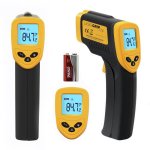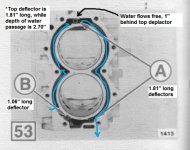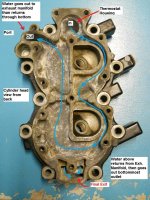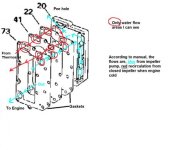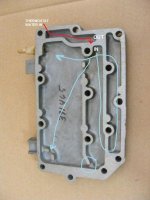I just purchased a Carolina Skiff J-16 with a 2000 25 hp Johnson - Tiller, electric start, manual choke, 2cyl 2 stroke. Using 40-1 oil mix. The engine starts quickly using half choke, and is plenty strong for the J-16. It quickly comes up on plane with two on board and runs plenty fast. Took it out for first time yesterday and it ran great for a while before starting to cut out and run rough. It did not stop running and I made it back to the ramp OK, but it was still cutting out when throttle was advanced. I bought new plugs and new fuel filter - a large inline one that looks like an oil filter. But I doubt that these change outs will fix it.
Does this behavior sound familiar - and what would be the next things to check. Since it didn't stop completely perhaps the problem is related to just one cylinder. Also does this model have any ignition switch other than the lanyard kill switch? I couldn't find one. Also #2, Is there a way to check the water pump with a garden hose fixture. Barrels are mighty hard to find, but I could put it back in the lake.
I just joined this forum and this post is very wordy. I just have a lot of questions. Thanks for any ideas.
Does this behavior sound familiar - and what would be the next things to check. Since it didn't stop completely perhaps the problem is related to just one cylinder. Also does this model have any ignition switch other than the lanyard kill switch? I couldn't find one. Also #2, Is there a way to check the water pump with a garden hose fixture. Barrels are mighty hard to find, but I could put it back in the lake.
I just joined this forum and this post is very wordy. I just have a lot of questions. Thanks for any ideas.


